Chart Types
A brief overview of the various chart types is provided below.
| Chart Type | Example | Description |
|---|---|---|
| Single Axis Charts | ||
| Column |
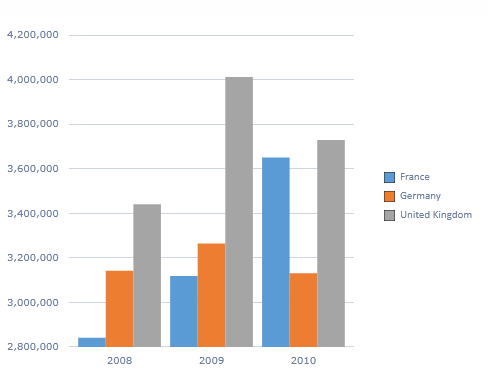
|
Default chart type. Each series value shown in separate column. |
| Stacked Column |
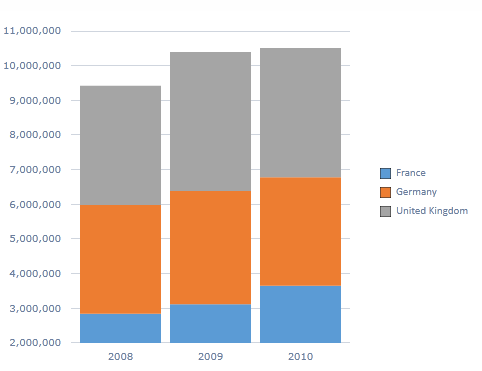
|
Shows accumulated series values based on ABSOLUTE totals. |
| Stacked Column 100% |
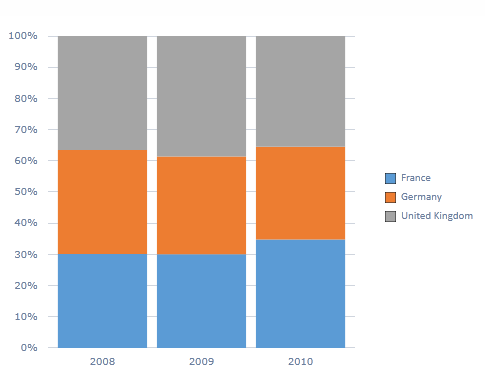
|
Shows accumulated series values RELATIVE to 100% totals. |
| Bar |
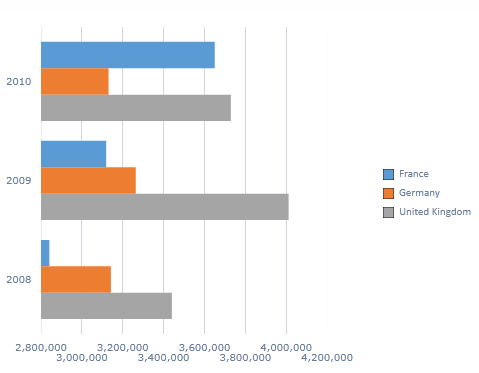
|
Horizontal bar chart. |
| Stacked Bar |
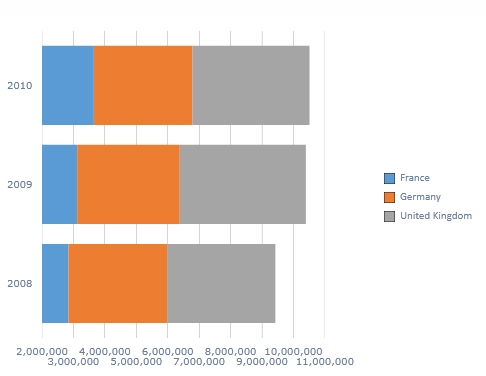
|
Shows accumulated series values based on ABSOLUTE totals. |
| Stacked Bar 100% |
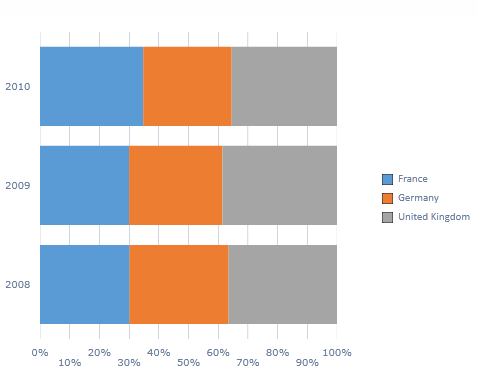
|
Shows accumulated series values RELATIVE to 100% totals. |
| Line |
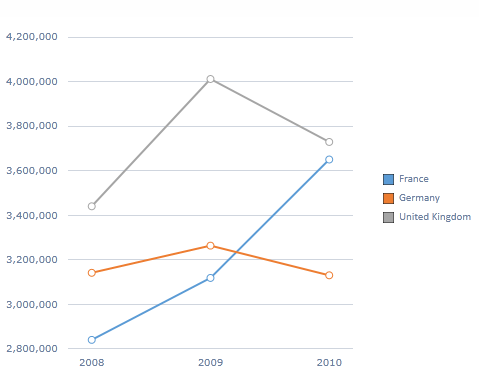
|
Displays information as a series of data points (markers) connected by straight lines. |
| Spline |
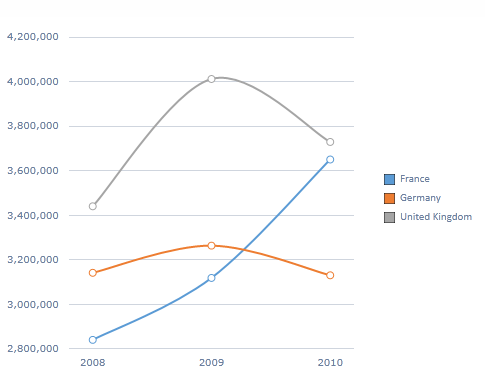
|
Displays information as a series of data points (markers) connected by curved lines. |
| StepLine |
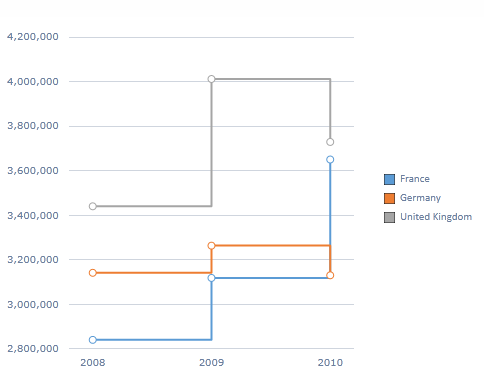
|
Displays information as a series of data points (markers) connected by straight lines. Step-like visuals are added between any two points that have differing values. |
| Pie |
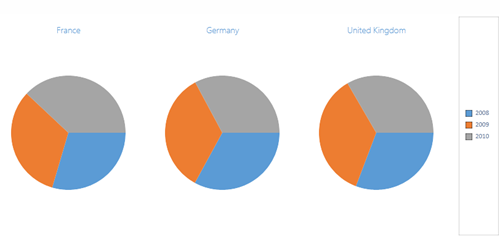
|
Show series as individual pies, and categories as pie segments. Automatically represented in multi-chart format. |
| Doughnut |
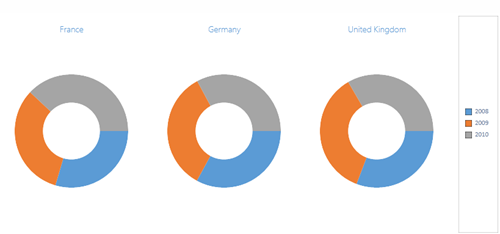
|
Show series as individual rings, and categories as ring segments. Automatically represented in multi-chart format. |
| Pyramid |
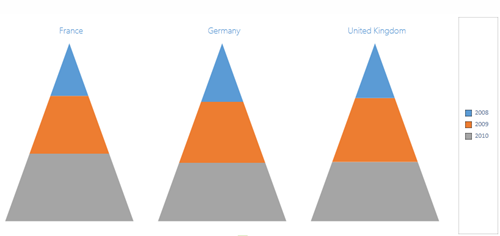
|
Show series as individual pyramids, and categories as pyramid levels. Automatically represented in multi-chart format. |
| Section Funnel |
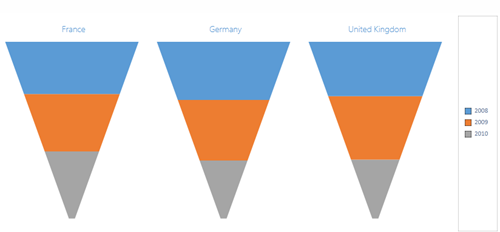
|
Show series as individual funnels, and categories as funnel levels. Automatically represented in multi-chart format. |
| StreamLine Funnel |
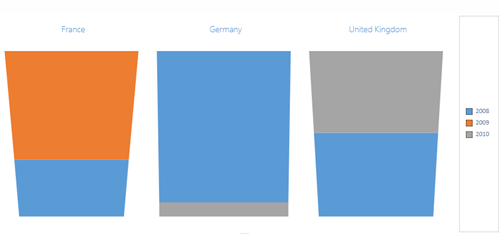
|
Show series as individual funnels, and categories as funnel levels. Automatically represented in multi-chart format. NOTE: A streamlined funnel chart cannot be viewed with a single data point. |
| Area |
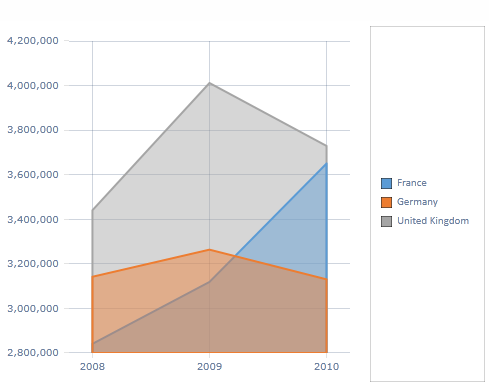
|
Each area item is "stacked" laterally on the chart. NOTE: The best way to view a plain area chart is usually in 3D mode with transparency. |
| Stacked Area |
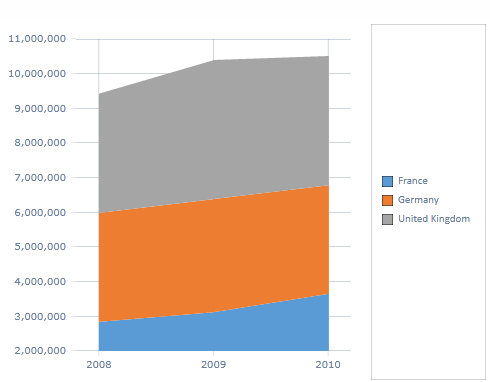
|
Shows accumulated series values based on ABSOLUTE totals. |
| Stacked Area 100% |
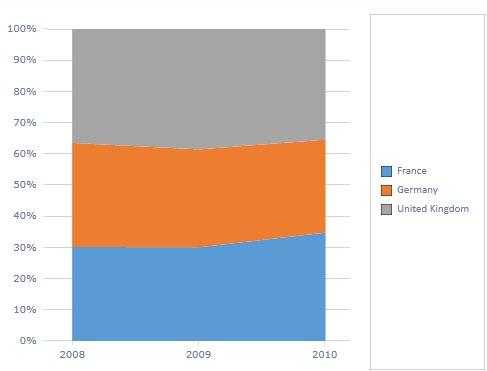
|
Shows accumulated series values RELATIVE to 100% totals. |
| Point |
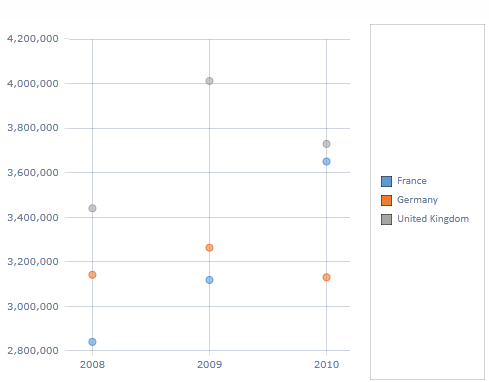
|
Displays information as a series of data points (markers). |
| Multi-Axis Charts | ||
| Scatter |
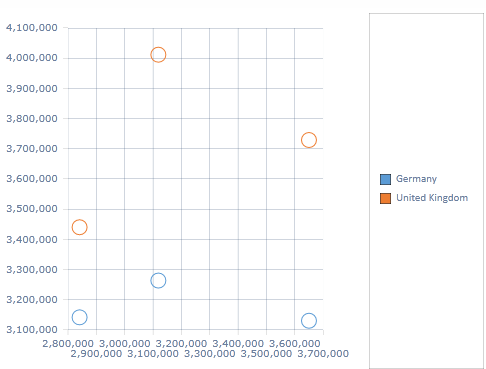
|
Scatter plots use the first two columns of a query to plot the x and y axes (and then every subsequent column). The rows of the query, which are typically used as the basis for the categories of a chart, are only displayed as data points in the plot. See Multi-Axis charts for more info on scatter charts. NOTE: A scatter plot chart cannot be viewed with a single column of data. |
| Bubble |
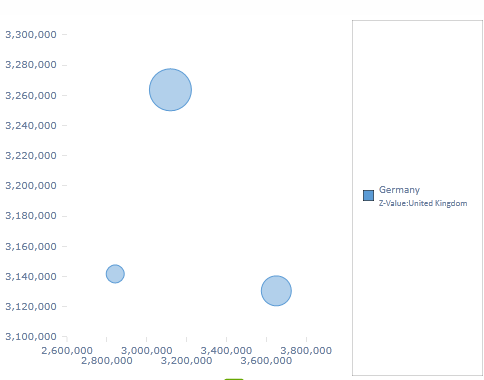
|
Bubble charts use the first three columns of a query to plot the x, y and z axes (and then every subsequent set of two columns). The rows of the query, which are typically used as the basis for the categories of a chart, are displayed as data points in the plot. See multi-axis charts for more info. NOTE: A bubble plot chart cannot be viewed with fewer than three columns of data. |
| Circular Charts | ||
| Radar |
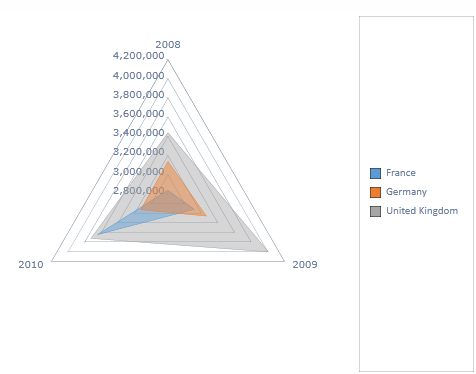
|
Draws an area chart on the basis of a 360 degree plane, which has been subdivided into arcs equivalent to the number of data categories in the result set. |
| Polar |
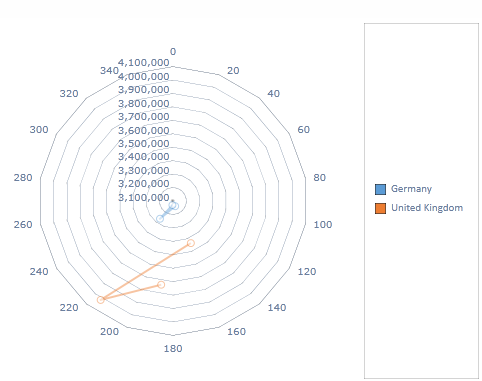
|
Draws scatter plots using a 360 degree Cartesian plane. Polar charts require at least two columns of data (like scatter plots). |
| Other Charts | ||
| Waterfall |
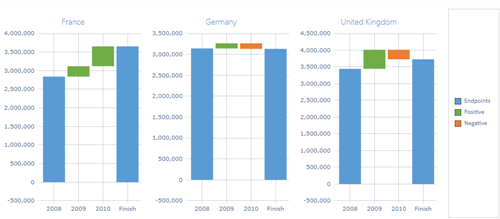
|
Waterfall charts demonstrate how an initial value is influenced by a series of intermediate (positive or negative) values. Three distinct colors are used to indicate endpoints, positive values and negative values. |
| Candlestick |
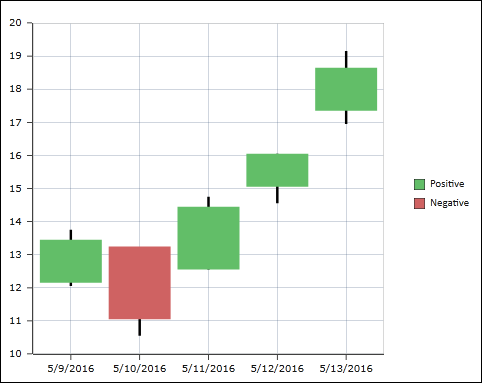
|
Candlestick charts require four data points representing high, low, open and close values. |
| Stock |
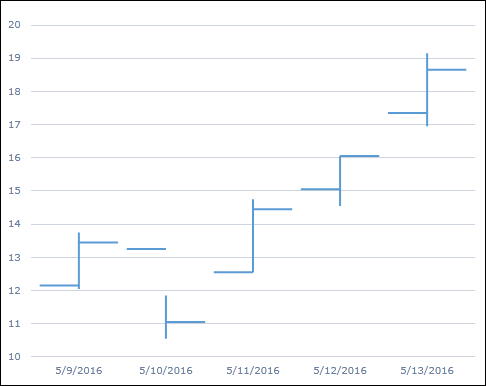
|
Stock charts require four data points representing high, low, open and close values. Stock charts are similar to candlestick charts, but use simple lines instead of candlestick icons. |
Home |
Table of Contents |
Index |
User Community
Pyramid Analytics © 2011-2022

